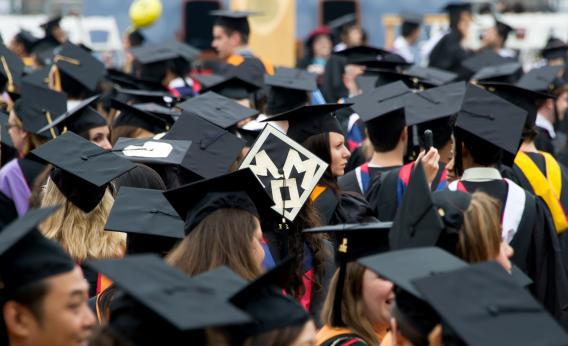U.S. student debt is on a scary trajectory. New statistics from the New York Federal Reserve show just how steep it is. Education loans are piling up at an unsustainable rate and delinquencies are rising despite the slowly improving American economy. Instead of trying to tackle the problem, Washington’s policies continue to exacerbate it.
Student loans in the United States have surged to $900 billion from $360 billion in just seven years. Even as the U.S. housing bubble inflated between 1999 and the start of 2006, mortgage balances didn’t grow that fast. The bursting of that bubble triggered the worst recession since the Great Depression. Sure, the numbers were considerably larger. But there’s enough student debt to cause trouble - more than auto loans or credit card debt, for example.
And people are struggling to make their payments. The Fed’s numbers show that a startling 12 percent of borrowers aged 40 to 49 are at least 90 days behind. That’s a demographic that should be in the prime of their careers and free of such stress. The unemployment rate for that group is probably under 7 percent, according to Bureau of Labor Statistics data, significantly below the national average of 8.2 percent. Moreover, though joblessness has declined from its late 2009 peak of 10 percent, most age groups are experiencing higher rates of student loan delinquencies.
The implication is that even as the U.S. economy slowly improves, many Americans will continue to struggle under the weight of borrowing that was supposed to bring them qualifications and well-paid jobs. Most of the loans are backed by taxpayers, raising the prospect of huge writeoffs for the government down the road. But instead of working out how to curb the growth of the loans, policymakers continue to subsidize student borrowing. Just this month, President Barack Obama signed legislation to keep the cost of education loans at a below-market 3.4 percent.
Making further borrowing ultra-cheap is the wrong medicine. At the recent growth rate, Americans’ student debt will exceed their credit card and auto loan balances combined within five years. With incomes growing only slowly, something will have to give.
Read more at Reuters Breakingviews.
